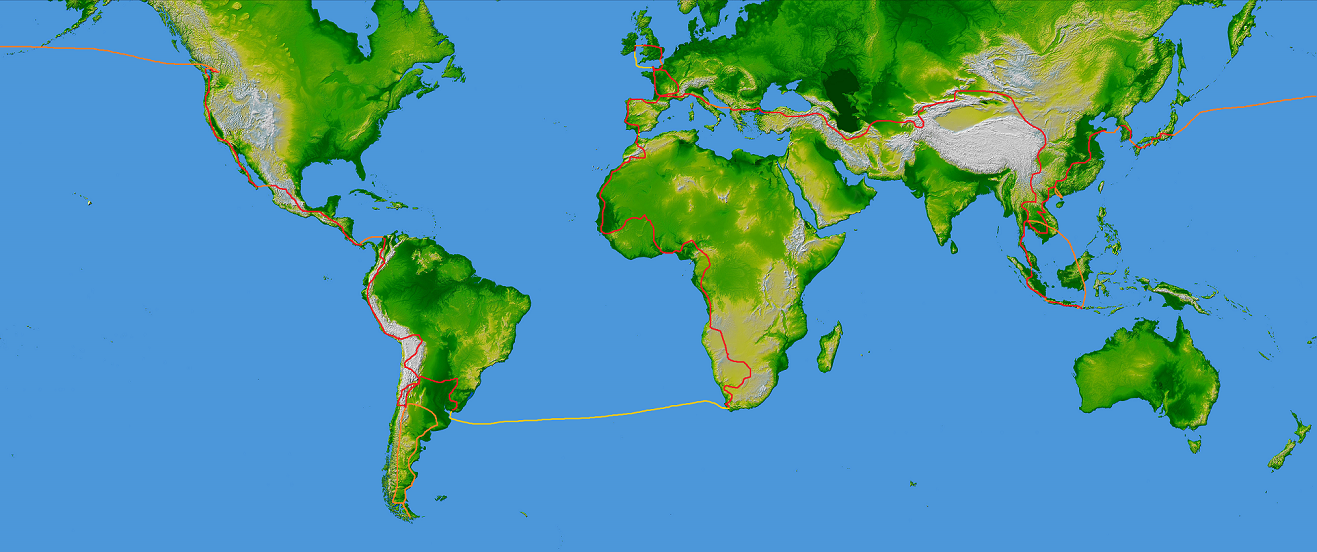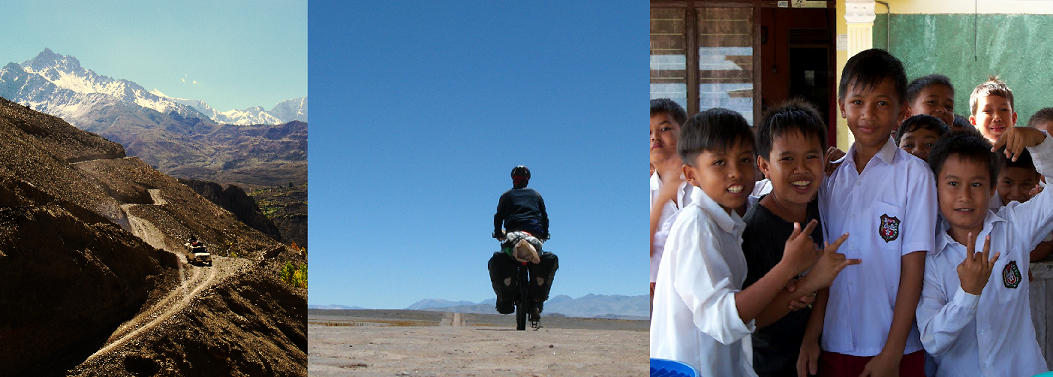In fact, these days there are far less elephants wandering around Laos than the 14th century when Prince Fa Ngum bestowed his kingdom with the wildly exaggerated quota of pachyderms to instill fear in his covetous neighbours. So far we've only spotted two specimens, as we caught a fleeting glimpse of two large rear ends and a mahout balanced precariously atop, swerve around a mountain bend in the back of an articulated truck and disappear down the twists and turns of a mountain road. We couldn't see their faces but I'm sure the experience for these large passengers wasn't dissimilar to the quesy-faced bus passengers we saw as a diesel drenching behemoth groaned past and began another slalom event.
The past fortnight has been characterised by hills. Generally spending our mornings going very slowly up them before enjoying an all too brief descent. The landscape of forest and cultivated hillslopes with only the occasional friendly roadside village dotting an otherwise remote and sparsely populated area in this region. As relentless as our central American baseline of the Guatemalan highlands by which we measure degrees of vertical improbability, the newly paved Laotian thoroughfares are at least generally well graded and traffic-less and have been a pleasure to ride on. Supplies available in the villages are generally only the most important, warm beer and canned mackeral, the lack of commerce clearly showing the dependence of the people on the surrounding forest. Over 70 per cent of the non-rice food consumed in rural Laos comes from the forest.
As in similar areas throughout the world, an increasing imbalance is occuring in the exploitation of natural resources and deforestation threatens to change a way of life. The difficulty between creating opportunities for robust rural livelihoods and conserving the foundation (the forest) that many of these livelihoods depend on is a difficult one. The presence of powerful forces in the rapidly developing economies surrounding Laos, particularly Thailand, China and Vietnam, has seen a huge influx of expertise in areas such as road and dam building, and a similarly huge outflux of raw materials, especially tropical hardwood.
Tourism is another recent industry in Laos. More cautiously welcomed perhaps since all the flaws and lesions of neighbouring Thailand's experience of the industry as a reminder of the pitfalls as well as the prosperity that tourism can bring. A conscious attempt at preventing cultural erosion is evident in the signs as well as the guidebooks, appealing to visitors to respect the unique and fragile culture they are witnessing, is admirable but hardly sufficient. This morning in Luang Prabang we rose before dawn to watch the monks from the many monasteries collect alms along the streets from the devout. As the highest grade sticky rice and ripe bananas were put into the monk's collection bowls, crowds of tourists (from both near and far), poked their camera lenses and flashes into the monk's faces, surrounding the procession like paparazzi and left both of us with a feeling of saddness and violation. Last night the English-speaking owner of the guesthouse we're in here in Luang Prabang talked about the changes, positive and negative, that he has witnessed in his native city and while he has invested in the industry he fears the impact that the outside will have on the way of life here.
After our sobering visit to the alms collection this morning, our faith was restored in fellow travelers when we were invited to a breakfast of coffee and sandwiches with a Dutch-Canadian couple in their sixties who reminisced about their own experiences, beginning in rural Zambia in the early 70s. The allure of Laos, with its quiet rural roads and the very friendly demeanor of many people, has drawn us in and we're really enjoying our time here. Ten years ago I'd spent a couple of months here on an internship with Concern, an Irish NGO that has since left the country due to financial constraints but we did manage to see some of the legacy of their work in Hua Phan province and most importantly managed to find a water pump that they had put in place with which to fill our water bottles.
Luang Prabang, Laos
Pedalled: 55,967 km






















